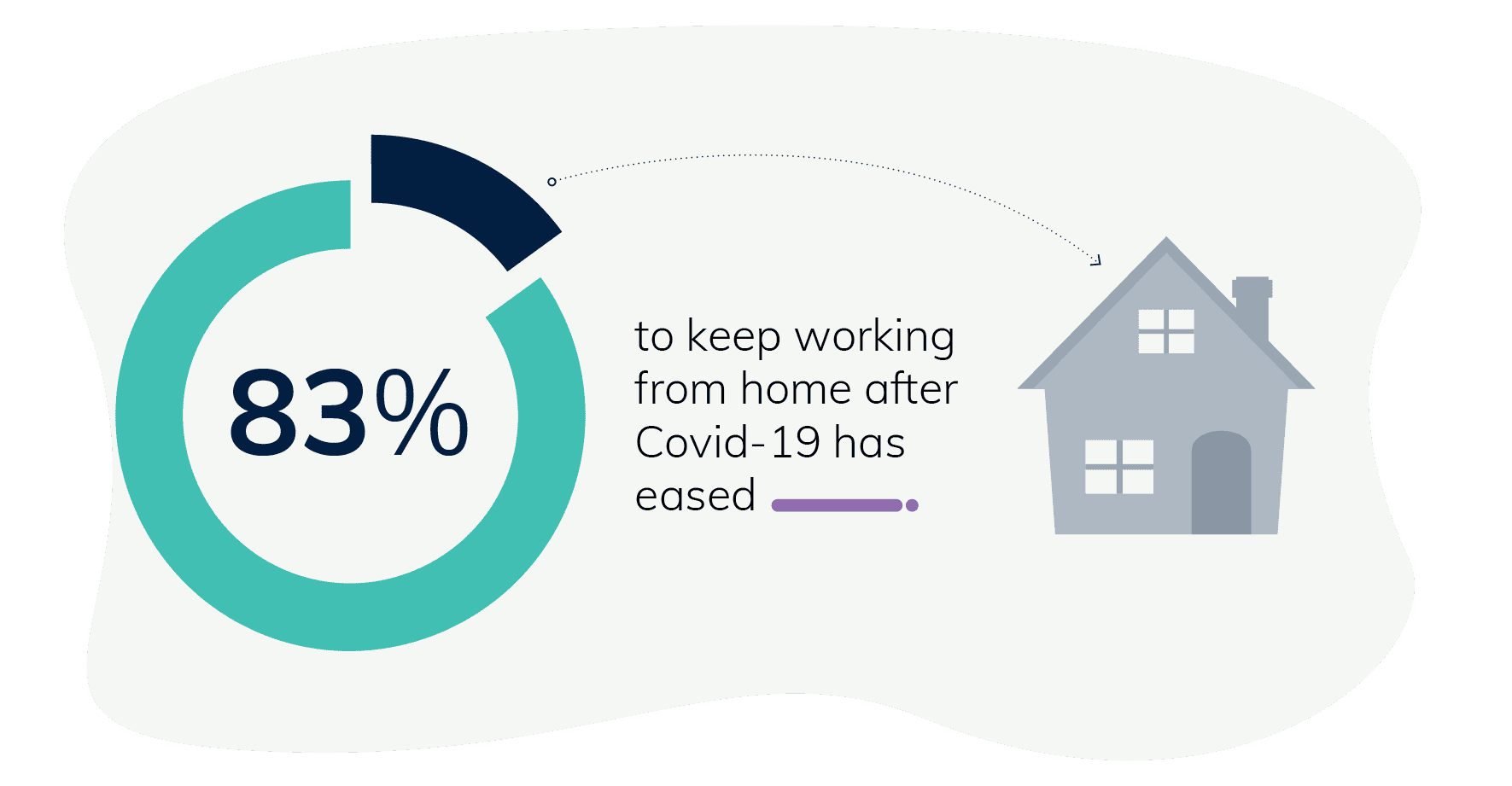Exploring the Psychology of Remote Working: Insights on how to Adapt

Anthony Cotter
Creative Director
June 19 2020

By Pete Rawlinson.
There’s no doubt remote working has now moved into the mainstream. The Covid-19 pandemic has forced many businesses to start working from home in large numbers and at short notice. And with the likes of Twitter announcing that staff can continue working from home ‘forever’, it’s clear remote working is here to stay. But how is it affecting employees and leaders? And what do businesses need to do to adapt?
Our latest webinar was a timely look at the psychology of remote working. Gillian French, Chief People Officer, Cubic Telecom and Scott McInnes, Founder and Director, Inspiring Change joined me on the panel for a virtual fireside chat.
Well attended and with interesting questions submitted by attendees, the discussion was wide-ranging and insightful. In this post, we share some of those insights organized by themes. And you can watch the webinar in full here..
How remote working is affecting people
Gillian kicked off by reporting that Cubic’s staff have adjusted well to remote working. Most people were positive and relieved that they could continue working safely. The IT department has done well in ensuring everyone has the tools needed to work remotely.
According to Gillian, as lockdown has continued, there’s been a noticeable change in staff mood. The initial euphoria has given way to anxiety about the future. Concerns about childcare during the summer holidays and the possible return to the office are issues for many staff.
She also advised that while productivity has increased, there is now a real risk of staff developing mental health issues or burnout. Team leaders need to be aware of the potential and keep a close eye on their staff. However, Gillian advised that now is the time to be supportive of staff members. Performance management issues are best dealt with at another time. Employees already have enough to contend with, and compassion is required at least in the short term.
Scott confirmed that remote working isn’t for everyone. There will be some people who find working from home a challenge. Perhaps they live alone and are isolated. Or maybe they are struggling with homeschooling.
Furthermore, Scott pointed out, working from home during a lockdown is different from choosing to work remotely. There’s a different psychology at play.
For Scott, team leaders have a central role to play. He described them as being the ‘linchpin’. They know their staff well and are best placed to identify those who are not coping. Early warning signs include new performance issues, being late to meetings, taking too long to complete work or respond to emails, and poor engagement.
Furthermore, Scott advised, companies should be mindful of providing opportunities for employees to communicate with each other. In fact, employee to employee communication and those social chats between workmates are vital. Bake-sales, virtual coffees, and quiz nights have a place but so too does casual conversation. Technology has provided the tools. Employees need to know it’s OK to use them for those water cooler conversations they would enjoy in the workplace.
How remote working is affecting leadership
The panel agreed that when it comes to successful remote working, communication is at the heart of good leadership.
According to Scott team leaders should be ‘checking in, not checking up.’ Structured team meetings and one-on-ones are, of course, essential but even more critical is less formal communication. It shouldn’t be all about work all of the time.
Scott said that team leaders should be picking up the phone and chatting to their team over a cuppa. Regular conversations about how they are doing or casual chats about good TV to watch in lockdown are essential. It’s the human side of communication that’s vital, and we take it for granted back in the workplace.
So much of our everyday communication is in non-verbal cues and body language. Team leaders will be finding it challenging to adjust to the virtual office setup where these vital cues are absent.
At Cubic, Gillian advised, the senior leadership team have each been calling five employees daily. These calls are about maintaining a good company culture and being supportive of staff rather than checking up on productivity.
Furthermore, the move to remote working has required a huge operational shift at Cubic. Gillian advised that the company has had to review all its operations: from communications and leadership systems through to recruitment and onboarding.
People managers at Cubic are now undergoing mental health first aid training. The training will ensure they are better equipped to identify and manage any issues in their employees.
For Gillian, the shift to a more people focus in the organization has been welcome. After all, business is first and foremost about people and relationships. According to Gillian, the pandemic presents a great opportunity. Those organizations that do well and lead their people will build social capital and will emerge from the crisis all the stronger.
Scott agreed that this is a real opportunity to make a difference. He has received feedback from several companies that senior leaders are adapting and are being much more visible. The challenge will be to sustain this increased visibility after the crisis is over.
What are the long-term implications for businesses?
There was a consensus among the panel that post-COVID working will be different. Scott called it a more ‘blended approach’ to work. There’s no doubt there will be an increased demand from some workers to continue remote working at least some of the time.

In fact, research recently published by NUI Galway and the Western Development Commission confirms the panel’s view. In this survey, 83% of respondents say they would like to keep working from home after the current restrictions are eased.
However, the same study discovered that switching off from work, reduced contact with colleagues, and poor physical workspaces are significant issues for home workers. These are challenges leaders will need to address if remote working is to be sustained in the long-term.
At Cubic Gillian’s discovering that some employees are anxious about a possible return for work. Many are really enjoying the work-life balance that working from home presents. Reduced hours spent commuting and more quality time with the family have made a real difference. Furthermore, staff may be anxious about the health risks a return to work might involve.
However, for other employees, it’s a different story. They may live alone and be missing the social contact of the office.
Cubic is, therefore, taking a balanced approach. Although planning for a return to work, Gillian has made it clear to employees that no one will be forced to go back to the office.
For Scott, the blended approach requires management to consider their communications mechanisms carefully. Leaders need to know what to communicate and how often. There will be some upskilling involved, so leaders understand how to manage employees who are no longer sharing an office with them.
It’s essential to get it right as there are potential knock-on effects in all areas of management, from recruitment and retention through to disengagement.
Main takeaways from the remote working webinar
- Some employees will be thriving working from home, while others will find it a challenge.
- Team leaders know their employees best. They should be checking in, rather than checking up on their staff.
- Having multi-directional communication channels in place is critical, including employee to employee.
- Managers should be able to identify the warning signs that their staff may be struggling with remote working. Team leaders should pick up the phone and follow up on these with employees as soon as possible.
- Visible leadership from senior managers is vital for successful home working.
- A ‘blended approach’ is likely in the post-COVID workplace. More staff will expect to work from home at least some of the time.
- Businesses need to adapt their communications and operations to fit the new way of working. Failure to do so could result in problems with recruitment, retention and employee engagement.

How technology can help
There’s a whole host of remote work tools out there to support your business. Technology can help in the following crucial areas:
- Keeping open the lines of communication between management and staff as well as employee to employee
- Connecting employees through virtual team meetings and chats, one-on-ones or presentations
- Facilitating collaboration and joint working across the organization including file and document sharing
- Supporting task management so employees can keep track of what needs to be done and managers can retain oversight
- Providing time-tracking to help managers assess productivity and identify any roadblocks.
Perhaps the most important message from the panel’s discussion, however, was the importance of communication. Opportunities for informal conversations, as well as structured business-focused interactions, are essential. And technology can undoubtedly make a difference in this critical area.
For a full discussion on the best remote work tools available, check out our blog here.
Or better yet…if you’re looking to stay on top of how you can use psychology and communications in the workplace to be more productive. We think you’ll love our monthly newsletter The Seven.
You can subscribe below if you’re interested.